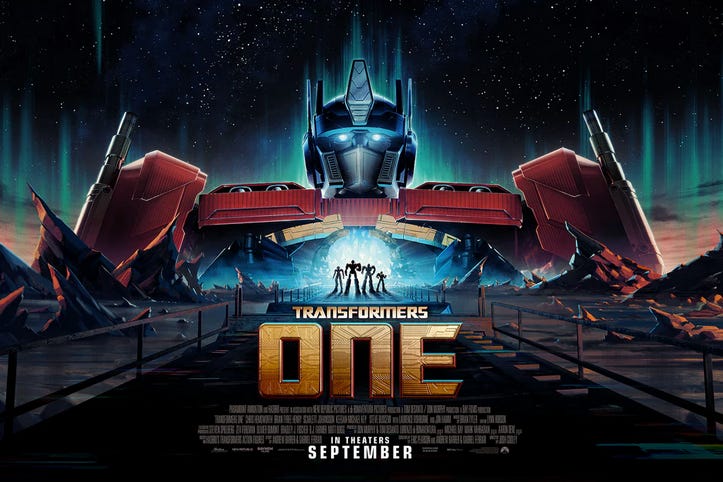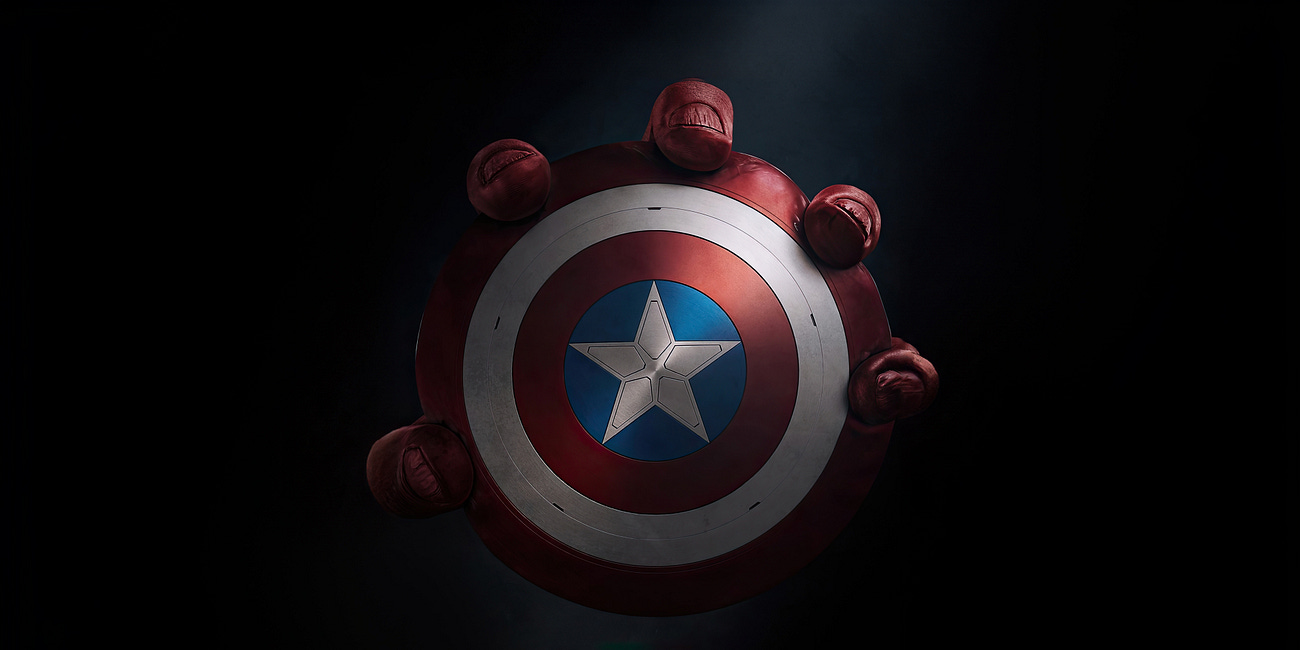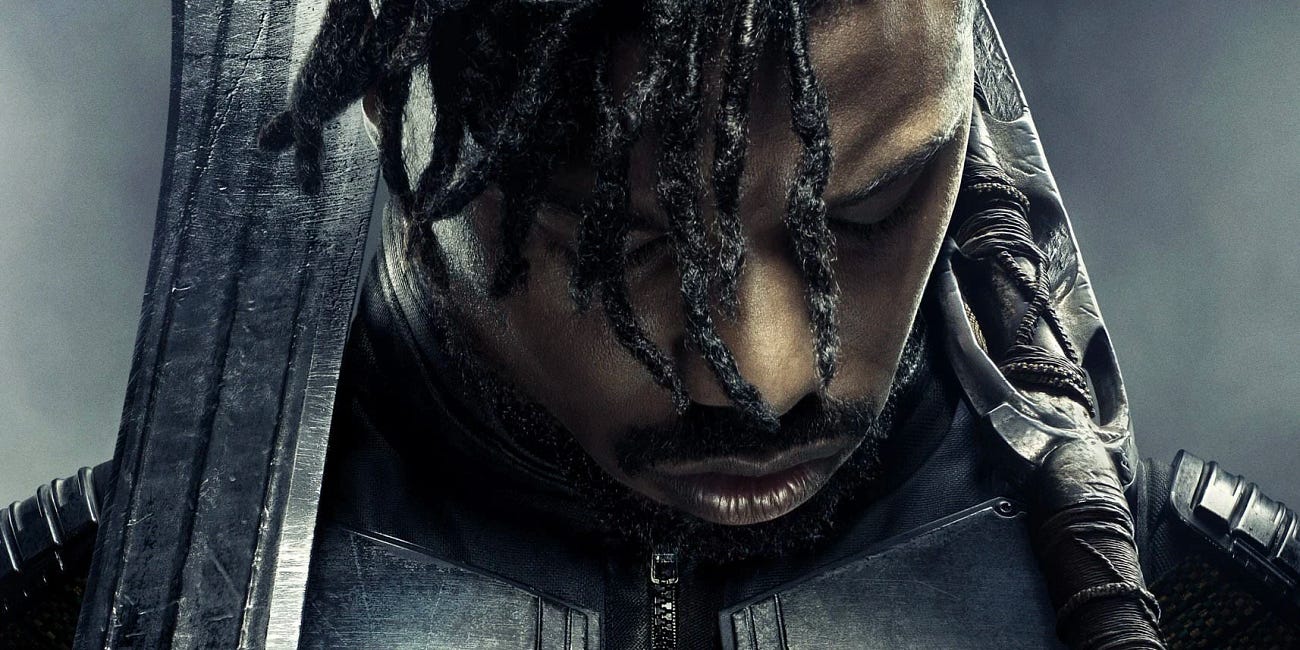Transformers One and the Myth of the Spark
A Story of Freedom That Stops Just Short of Liberation.
A Spark, Not Yet a Flame
A Spark, Not Yet a Flame
They call them Cogless. But the label does more than describe, it deletes.
The name doesn’t mark what was taken. It brands what’s missing.
Transformers One opens in spectacle. Gears, light, speed, charm. It hums with kinetic energy and polish. But something’s off beneath the glow.
The film gestures toward systems, slavery, erasure, rebellion, but doesn’t hold. It names pain but skips the wound. It stages revolution like an upgrade, not a reckoning.
And that silence isn’t neutral.
As Erich Fromm once wrote, “Silence is the ultimate weapon of power.”
When media shows oppression without dwelling in it, that silence shields power. It softens the strike. It teaches audiences to look away.
This isn’t about tone policing. This is about narrative responsibility. If you raise the specter of caste and mutilation, you don’t get to resolve it with a spark and a speech.
Let’s break it down.
I. The Name That Erased Them
Miner. Cogless.
Function as fate. Identity reduced to use. Even bots with names, D-16, B-127, Elita-1, are treated as designations, not individuals.
The word Miner is used like a slur. It drips from elite voices with contempt. It doesn’t describe labor, it ranks it.
And visually, that contempt is echoed.
The miners are shot from above, grouped in shadows. The frame flattens them into parts of the machinery. There are no close-ups. No pauses. The editing cuts fast, skipping grief, skipping thought. Their pain isn’t shown, it’s implied, then buried.
In the Iocon 5000, a voice sneers:
“And the miners have fallen way behind. We can now focus on the real contenders.”
The working class doesn’t just fall behind. They vanish mid-sentence.
And the Cogless? It should land like a scream. But the film whispers it. These bots were mutilated, cogs stolen by the state without consent. They wake up less. And society tells them it’s their fault.
Yet the film doesn’t stay with them. When Orion and D-16 learn the truth, it cuts. No zoom. No silence. No time to mourn. Just momentum.
This isn’t liberation. It’s narrative triage.
In contrast, IDW’s Lost Light lingered. It gave the marginalized names, lovers, rebellions. It let bots mourn and organize. Here, the bots don’t even get time to react.
II. The Speech That Redirected
Orion stands before the crowd. He speaks with fire. The frame tightens. The light halos.
He names Sentinel Prime. Points upward. Names the thief, not the system.
“We were all born with transformation cogs. Sentinel stole them from us.”
But Sentinel didn’t act alone. A world let him. Culture, myth, silence, all colluded.
And yet the speech sells a binary. Work to death,
or fight him. No structure. No root. No question of how this caste formed without protest.
It’s rousing. It’s clean. It’s false.
The camera stays on Orion. The crowd stays in blur. Revolution as backdrop. The people he speaks for remain faceless, voiceless, passive. They cheer on cue.
One spark. One hero. One change.
Even the spark line
“What defines a Transformer is not the cog, but the spark inside”
feels like slogan, not salvation.
There’s no community here. No reckoning. Just a marketing beat disguised as a mantra.
III. The Myth That Chose a Face
The cogs are restored. The Matrix descends. Optimus rises.
But who built the mines? Who guarded the surgeries? Who ate while the Cogless labored?
No names. No charges. No memory.
The film doesn’t clean the wound. It crowns a survivor.
And the light is holy. Halos. Slow-mo. The Matrix as relic, not weapon. Its glow forgives everything.
But liberation is not the same as ascension.
This isn’t justice. It’s aesthetic absolution. One face anointed while the rest fade.
The riot that sparked change? Contained. A flicker, not a movement.
And the myth, Primus, the divine cog-giver? Not questioned. Not grieved. Its violation becomes footnote, not heresy.
It’s not that the film ends too soon. It’s that it ends too quietly.
IV. The Silence That Framed the Frame
The miners are framed from above. The Cogless never get a close-up. The trauma is edited out.
And the speech? It holds only one voice. The crowd doesn’t push back. The lens stays loyal to the chosen.
Rebellion here is performance. Uprising without pain. A crown with no reckoning.
And yes, this is the first film in a franchise. Yes, it must appeal wide. But wide doesn’t mean shallow. Simple doesn’t mean safe. Even films for children can teach the difference between being heard and being used.
Transformers One sparks a conversation. But it’s not a flame. Not yet.
Let’s hope the next film stays long enough to feel the heat.
V. But What If
Maybe this is a spark, not a flame. Maybe Orion’s words are meant to fracture the myth in sequels still to come.
“One spark. One voice. The hope of a chorus.”
If so, this chapter is setup. The Cogless may yet speak. The myth may yet bend.
But betting on future films to redeem present failures is risky. Narrative responsibility can’t be outsourced.
“Spectacle doesn’t have to obscure. It can amplify.”
Films like Wall-E, Into the Spider-Verse, and Andor prove that thematic weight and momentum can coexist. Transformers One chooses sleekness over scars. That’s not an accident. That’s design.
VI. What Stories Owe Us
“If even fiction can’t imagine collective change, what hope do we have?”
Our stories owe us more than polished metaphors and softened betrayals. When injustice is reduced to one villain, the system survives the credits.
Too many narratives exist to keep the machine humming.
And the silence?
It’s still working.
We can break that silence. But only if we stop mistaking sparks for fire.
“If even fiction can’t imagine collective change, what hope do we have?”
When legacy is handed down, it often comes wrapped in the same chains it promises to break
Captain America: Brave New World: Why the Shield Was Never Ours
Let’s break this down across three moves:
Power only tolerates resistance when it can be contained.
FRAMING MONSTERS: KILLMONGER
I’ve always been drawn to villains who don’t just oppose the hero, but unravel the story’s comfort zone. The ones who refuse their role. Who make the camera flinch. Who force the narrative to earn every silence.
Works Cited
Transformers One (2024)
Directed by Josh Cooley. Produced by Paramount Pictures and Hasbro Entertainment. All characters and story elements related to Transformers are the intellectual property of Hasbro and used here for the purposes of commentary and criticism under fair use.
IDW Publishing:
The Transformers: Chaos Theory – Written by James Roberts, art by Alex Milne. IDW Publishing, 2011.
Transformers: Lost Light – Written by James Roberts. IDW Publishing, 2016–2018.
Quotations & Sources:
Erich Fromm. The Anatomy of Human Destructiveness. Holt, Rinehart and Winston, 1973.
Audre Lorde. The Master’s Tools Will Never Dismantle the Master’s House, 1979.
Erving Goffman. Stigma: Notes on the Management of Spoiled Identity. Simon & Schuster, 1963.
Disclaimer:
This piece is a work of critical analysis and commentary. It is not affiliated with, endorsed by, or sponsored by Paramount Pictures, Hasbro, or IDW Publishing. All trademarks and copyrighted material referenced herein remain the property of their respective rights holders. The purpose of this article is to examine cultural, political, and narrative elements within the film and its extended media context, under the principles of fair use as outlined in U.S. copyright law.
© 2025 Offscreen Observations. All rights reserved.
This article may not be reproduced, reprinted, or reposted without permission. Excerpts and quotes are welcome with attribution.
We can’t keep waiting for sequels to finish the sentence.
If the Cogless never speak, what kind of freedom are we cheering for?





